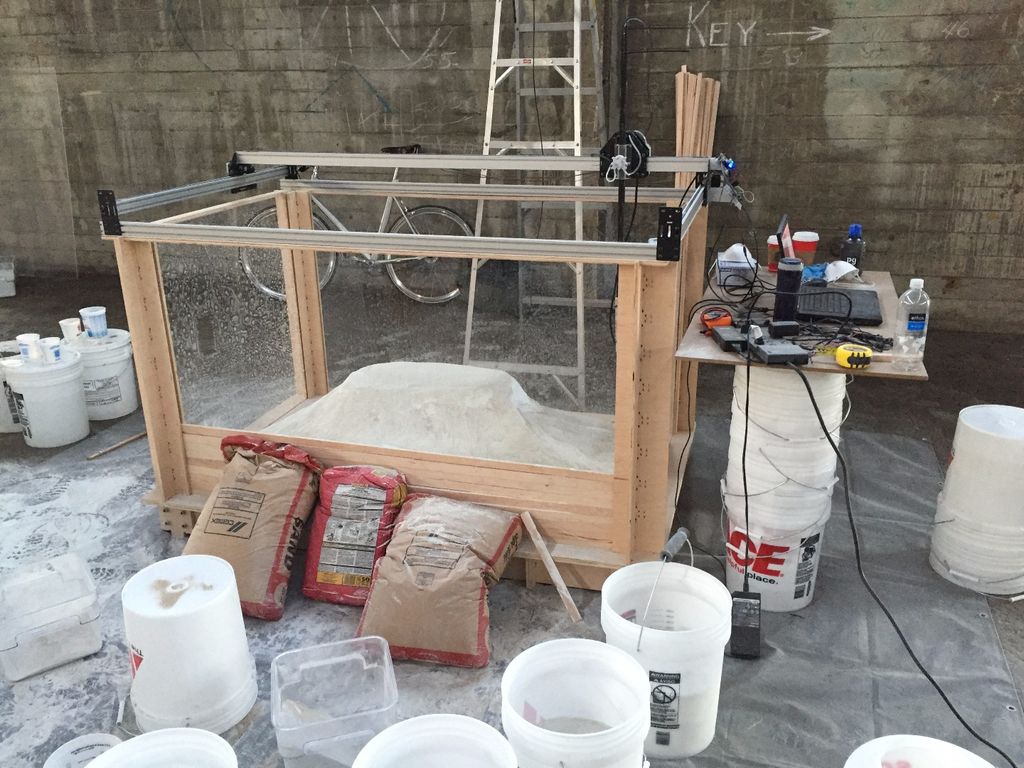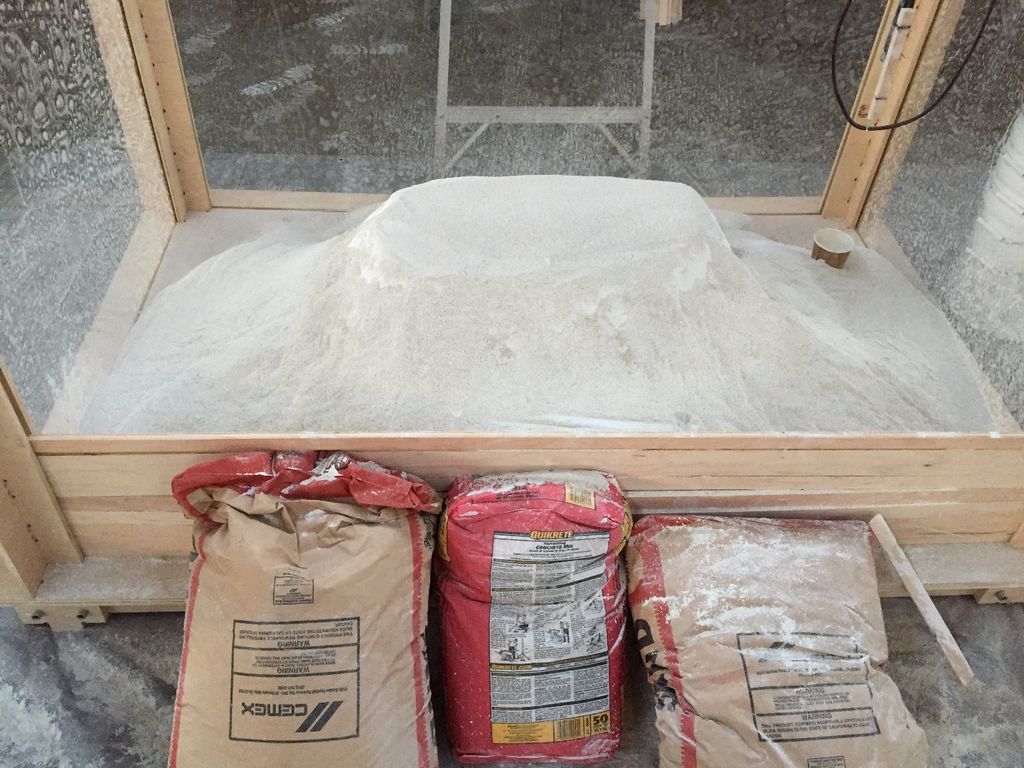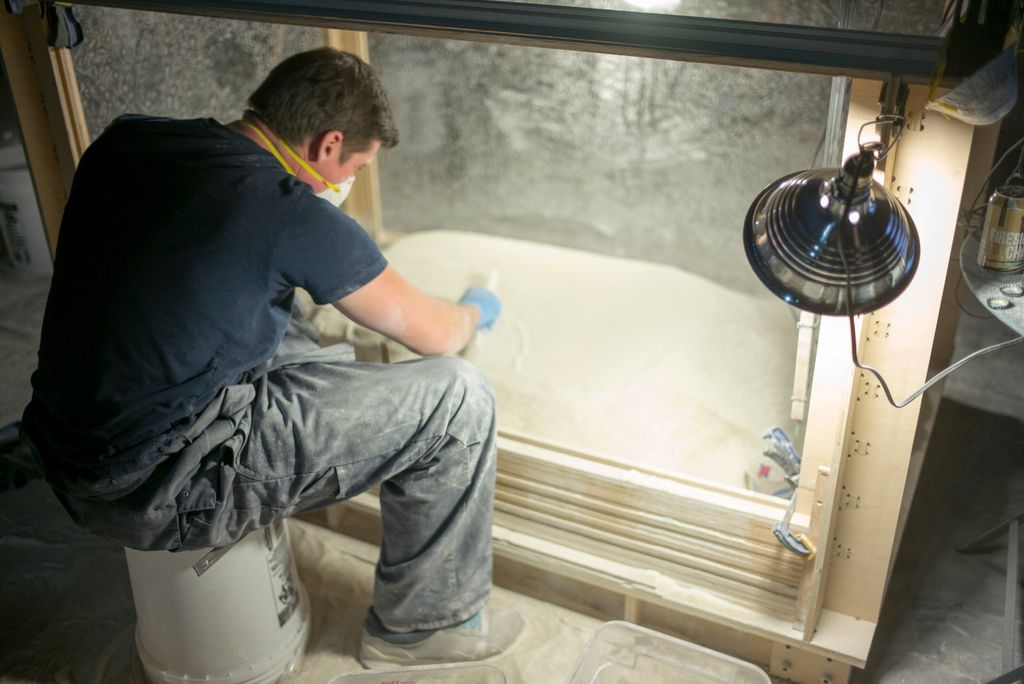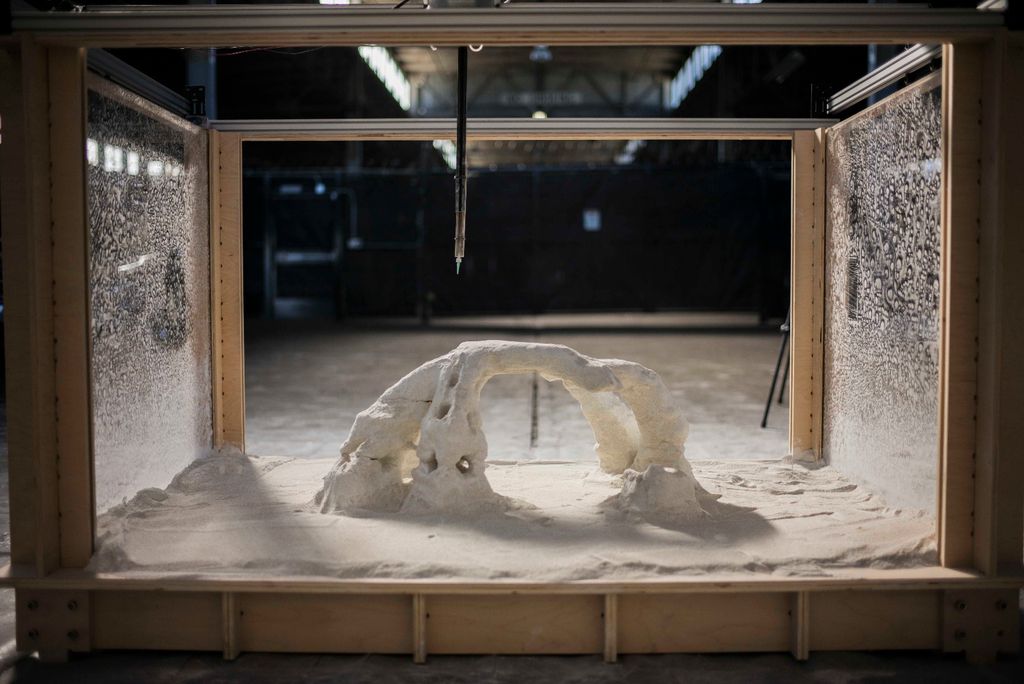
We’re reading an interesting Instructable, which provides detailed instructions on how to build an actual, working concrete 3D printer. But we think this is definitely not for everyone.
The printer design involves the well-known powder process, where a flat layer of powder is selectively impregnated with a binding agent. Successive layers gradually build up a complete 3D object, which is then excavated from the powder upon completion.
As you might imagine, the design is quite rudimentary, and as such there is quite a bit of manual work involved not only to build the machine, but to operate it as well.
For “powder”, this machine uses a mix of sand and concrete, as is typically done in traditional construction. However, the binding agent is different: they suggest using something called “PolyPavement”, which is a proprietary soil stabilizer. Basically it “glues” gravel and sand together, most typically used for roadways and parking lots. But here it’s used to bind the concrete and sand mix together. This will result in a less than usual strength for the object, but that’s how this project is designed.
We won’t go into the details of construction, but suffice to say the design is typical of cartesian 3D printers: an X-Y-Z axis-mounted extruder with a fixed build volume. A script is provided to create the GCODE necessary to run the machine.
What’s missing is a component to deliver new powder mix. Surprise! In this design, you must manually (yes, manually) add more concrete/sand mix for each individual layer. You must also smooth the fresh powder by sliding a board across, while ensuring it’s level.
The binding part of the process takes place automatically, as the GCODE drives the extruder mechanism to drop PolyPavement drops in the right places.
Eventually, the print will complete and you’ll be seeing a rather large pile of concrete/sand mix. Actually, it will literally BE a pile, unless you’ve constructed walls for the build volume. After waiting for the binder to cure, you can dig out the finished print.
We believe this is indeed an ingenious way to create your own concrete 3D printer, but it’s highly likely few will attempt this – and keep with it, simply due to the manual operation requirement.
Beyond hobbyists that build this machine for fun – and it’s likely a lot of fun to make this item, it’s possible some construction or architectural firms may have some interest, but the problem they’ll have is that they have to pay for an operator to run the machine, as well as build it. It may not be worthwhile financially to do so, unless they are somehow assured that their concrete prints will be usable in some monetizable manner.
Making money with such prints would be an interesting effort, as it would require careful design of something repeatedly required for that business. The business would have to invent a new uniquely required use, or prepare a design that is so compelling their clients cannot resist purchasing. But in general we suspect that may not be feasible for many firms.
Just because you CAN do something doesn’t always mean you SHOULD do something.
Via Instructables




